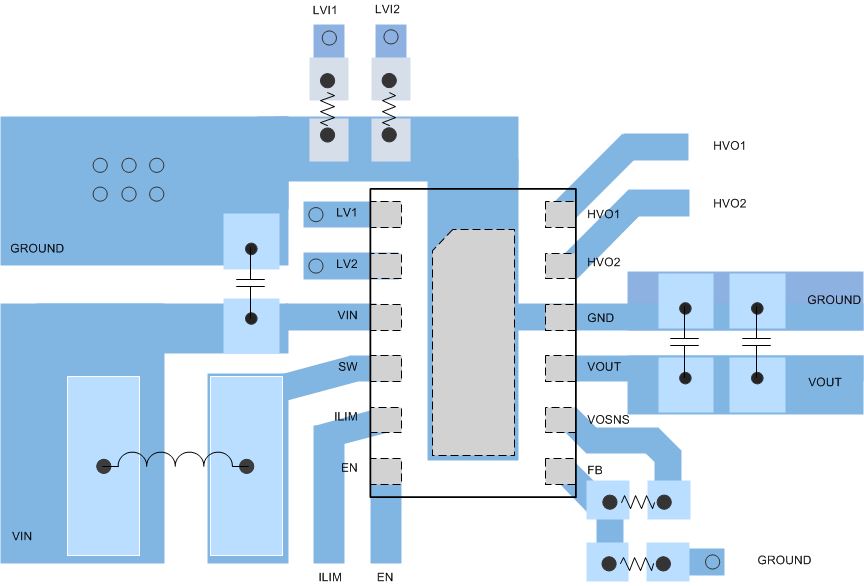SLVSE09A April 2017 – April 2017 TPS61096A
PRODUCTION DATA.
- 1 Features
- 2 Applications
- 3 Description
- 4 Revision History
- 5 Pin Configuration and Functions
- 6 Specifications
- 7 Detailed Description
- 8 Application and Implementation
- 9 Power Supply Recommendations
- 10Layout
- 11Device and Documentation Support
- 12Mechanical, Packaging, and Orderable Information
Package Options
Mechanical Data (Package|Pins)
- DSS|12
Thermal pad, mechanical data (Package|Pins)
- DSS|12
Orderable Information
10 Layout
10.1 Layout Guidelines
As for all switching power supplies, the layout is an important step in the design, especially at high peak current and high switching frequency. If the layout is not carefully done, the regulator could show stability problems as well as EMI problems. Therefore, use wide and short traces for the main current path and for the power ground paths. The input and output capacitor, as well as inductor should be placed as close as possible to the IC.
10.2 Layout Example
A large ground plane on the bottom layer connects the ground pins of the components on the top layer through vias.
 Figure 23. Example PCB Layout
Figure 23. Example PCB Layout